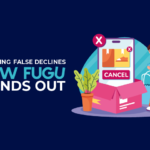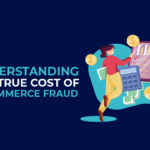How to Handle Shopify Orders That Have a High Risk of Fraud
Shopify is a platform for businesses of all sizes to create an online store. It offers users a customizable platform, an easy-to-use checkout process, and a wide range of features. However, with great power comes great responsibility.
Unfortunately, Shopify’s popularity has come at the expense of many different types of e-commerce fraud. This post will discuss how to handle and fulfill high-risk orders on Shopify.
How to Know if an Order Is Fraudulent
There are a few ways to determine if an order is fraudulent on Shopify. These include:
Order history discrepancies
One way is to look at the order history and compare the new order to previous orders. If there are large discrepancies between the orders, like a sudden and significant order amount, it could be a sign that the order is fraudulent.
IP address irregularities
Another way to tell if an order is fraudulent is by looking at the customer’s IP address. If the billing IP address isn’t located near or close to the shipping address, this could be a sign the order is fraudulent.
Changes in a customer’s shipping details
One possible sign that a purchase may be fraudulent is if the shipping address changes after the initial order is placed. This could be an indication that the purchaser is trying to hide their true location, which could be a sign of criminal activity.
Multiple failed order attempts
If a customer is trying to place an order multiple times, it could be a sign that they are trying to commit fraud. This could be because they are trying to place fake orders or orders with stolen credit card information. If you suspect a customer is trying to commit fraud, it is recommended you block high-risk orders and attempt to verify the customer’s personal details.
Can High-Risk Orders Be Managed?
There are various ways to manage high-risk orders on Shopify. These include:
In-app fraud checks
In-app fraud checks are a way to prevent Shopify fraud by verifying that the person trying to make a purchase is actually the person who created the account. This can be done by asking for verification information like a birthdate or address, using fraud prevention software like Shopify’s fraud analysis, or by requiring a password or authentication code that is only known to the account holder. This helps to prevent someone from stealing another person’s account and making fraudulent purchases or chargebacks.
Order verifications
- Just like in-app checks, an order verification is a process by which a customer’s order is checked against the information on their account to ensure that the order is valid. This can help to prevent Shopify fraud, as it makes it more difficult for someone to place an order using someone else’s account information. Order verifications can also help to ensure that orders are placed accurately and that no mistakes are made.
Is Managing High-Risk Orders Worth the Effort?
Generally speaking, managing high-risk Shopify orders can be worth the effort for merchants who are able to secure a favorable payment processing agreement with a reputable merchant account provider.
By taking these precautionary steps, you can prevent fraudulent orders, flag a customer that is making repeated and suspicious orders, and subsequently lessen the headaches and potential revenue loss now and in the future.




